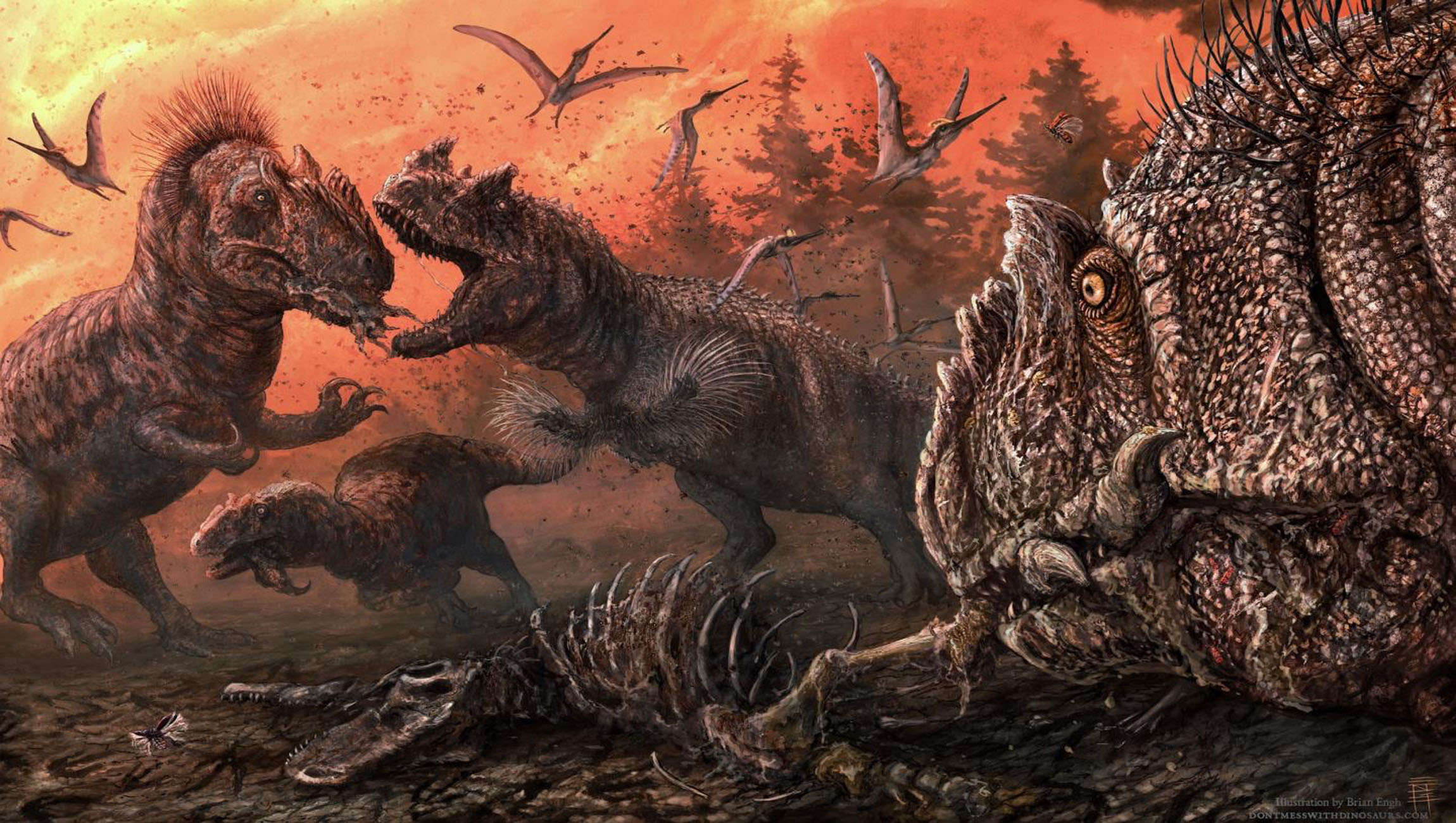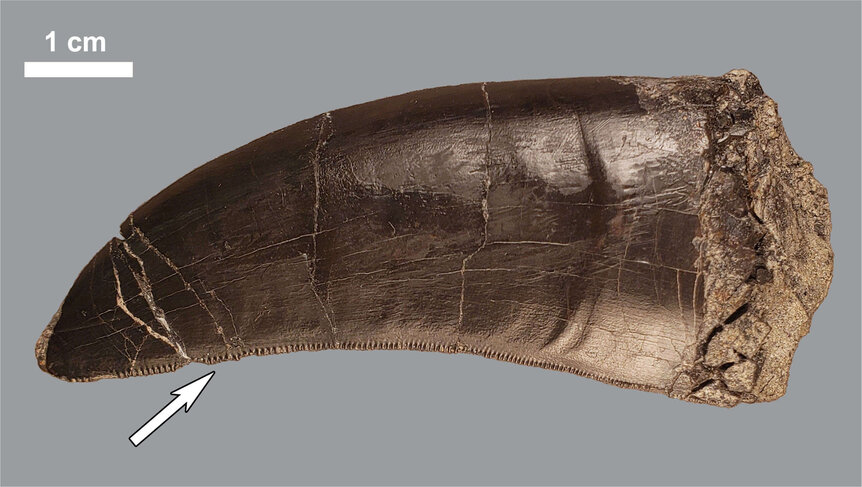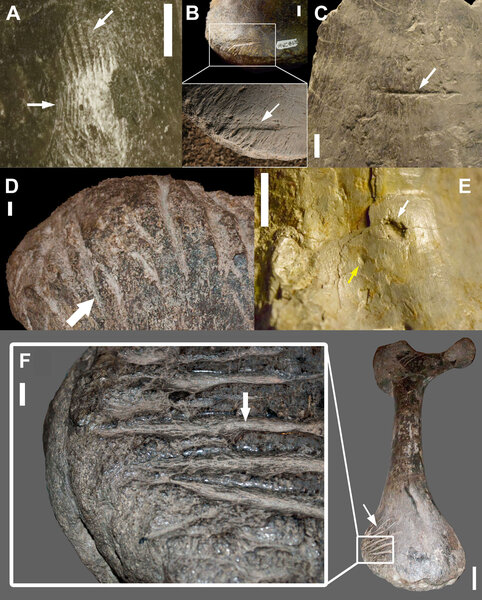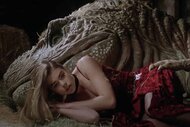Create a free profile to get unlimited access to exclusive videos, sweepstakes, and more!
Some dinosaurs went cannibal when Earth plunged into chaos 150 million years ago

Around 150 million years ago, things weren’t always as lush as Jurassic Park made it seem. Dinosaurs sometimes had to deal with famine — and that was when they turned to eating each other.
The Late Jurassic was dominated by theropod (which appropriately means “beast-foot”) predators like Allosaurus, which usually ambushed prey hanging out at watering holes. Sometimes those watering holes dried up, which meant plants would also wilt, and as sauropod dinosaurs that depended on those plants perished, things got dire. Carcasses were scavenged to the bone. Without herbivorous prey, the carnivores would succumb to starvation, and those that survived and hungered for flesh didn’t have much of a bias against gnawing on their own dead.
“If prey was scarce — for example, if the dry season was particularly harsh, predators probably turned to any resource they could find,” paleontologist Stephanie Drumheller-Horton of the University of Tennessee, Knoxville, told SYFY WIRE. “Any animal that died would have stuck around on the landscape for months, if not years. This gave a whole succession of predators, scavengers, and decomposers a turn at breaking down the remains further.”
Drumheller-Horton and her research team, who recently published a study in PLOS ONE, investigated theropod remains that were unearthed from the Mygatt-Moore quarry in what is now Colorado. Allosaurus, a vicious carnivore comparable to T. Rex, left behind tooth marks that could have meant cannibalism. Previous studies of the prehistoric environment at that site revealed that it would have encountered wet and dry seasons. During the wet season, water levels would rise high enough for the landscape to have plenty of watering holes where predators like Allosaurus would ambush their prey. Problems arose when many of those watering holes vanished during the dry season, taking the supply of easy meals with them.
Allosaurus would have had to put in much more effort to find its dinner when a harsh dry season brought hunger. During tough times for predators, anything that dropped dead was up for grabs, including the same species, as Drumheller-Horton found out from Allosaurus bones that were slashed with marks from the teeth of other Allosaurus. This monster also fed on (and was fed on by) other carnivorous dinosaurs such as Ceratosaurus. Such marks could have also been made by two Allosaurus fighting each other, especially over what was left of something’s rotting flesh. It is possible that one might have killed the other in the process and taken advantage of the free meal.
“Many modern-day predators will scavenge or even cannibalize one another. Meat-eaters generally won’t turn down a free or convenient meal, especially if food is becoming scarce. Even rats in major cities are becoming particularly aggressive and resorting to cannibalism,” Drumheller-Horton said. “Being an opportunistic generalist, which is how we interpret Allosaurus, can give a predator an edge though. If times are lean, the ability to change over to another food resource can help get animals through tough times.”
Bite marks are rare in dinosaur bones. Whether that is because scavenging behavior is not well documented, or because museums only want the the most pristine fossils to show off, remains something of a mystery. Theropods also tended to avoid chewing on bone to get to the marrow, while the opposite has been documented in ancient mammals. With teeth like serrated knives, Allosaurus had a bite that is still identifiable over a hundred million years later. If it really did devour the corpses of its own kind, which is more likely than just a fight since there are no signs of healing on bones with those marks, this is the first evidence of cannibalism in this species of dinosaur. However, it isn’t the only one that got desperate during dry spells.
“We actually do think other theropods probably exhibited this behavior, but before our study, it was previously documented in only two other groups: T. rex and Majungasaurus. The T. rex example was also interpreted as scavenging, similar to what we saw in our study. In Majungasaurus, it’s less clear if they were looking at evidence of fighting, predation, or scavenging,” Drumheller-Horton said.
Cannibalism is gruesome enough in itself (at least to us). Humans who ritualistically consumed human brains as part of a funeral rite were found to have contracted kuru, a rare disease caused by an infected protein that lives in brain tissue and causes brain damage in those afflicted. Not much is known about whether dinosaurs risked infection with disease-causing microbes or parasites from eating the flesh of their own kind, but Allosaurus still could have been risking its own life by scavenging regardless.
“It’s certainly possible, but it’s very hard to tell from these fossils. Certainly it doesn’t stop many modern groups from cannibalizing one another, but this behavior can cause problems related to disease and parasites,” Drumheller-Horton said. “The fossil record of parasites almost entirely comes from coprolites (fossilized droppings), so we do have some evidence for these kinds of health issues in the fossil record, just not at Mygatt-Moore.”
So prehistoric predators weren't immune to getting eaten themselves, even if their own kind went for them after death. It was a dinosaur-eat-dinosaur world out there.
















